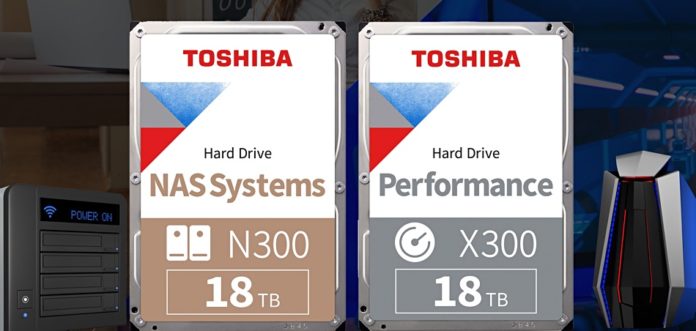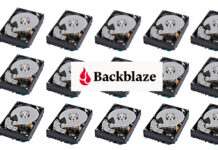Toshiba has extended the use of its 18TB FC-MAMR MG09 disk drive technology to its N300 NAS drive and X300 workstation drives, raising their maximum capacity to 18TB from the prior 16TB.
Both the N300 and X300 are 3.5-inch format, nine-platter drives in sealed helium-filled enclosures. The FC-MAMR technology, explained here, uses a specifically oriented output from a Spin Torque Oscillator (STO) added to the write head to increase the strength of the magnetic flux write signals pumped out to the disk’s recording surface and so make smaller and still stable bit areas possible. It adds an effective 2TB capacity, a 12.5 per cent increase, so a 16TB drive becomes an 18TB one.

The MGO9 has a 550TB/year workload rating, 2.5 million hours MTBF measure and a five-year warranty. Both the new drives are downrated on these measures. The N300 spins at 7200rpm, and has a 6Gbit/sec SATA interface. It transfers data at 281MB/sec, supports up to 180TB/year written and has a 1.2 million hours MTBF rating with a three-year warranty.
The X300 has a two-year warranty. Toshiba says its cache technology optimises cache allocation during read/write operations so as to provide high-level performance in real time. (Ditto for the N300.) Yet Toshiba’s datasheet includes no transfer performance number. Gamers interested in really fast I/O will use SSDs instead of disk drives.
The X300’s latency is 4.17ms, the same as that for the N300. We’d suppose the X300’s transfer rate is the same as the NX300 as well. Toshiba’s datasheet says the X300 has a 600,000 hours MTBF rating, unlike the N300’s 1.2 million hours, and a two-year warranty. We’re not given an X300 workload rating but that’s not so relevant for what is a PC/workstation gaming disk drive.
Western Digital has upped its 3.5-inch disk drives to 20TB using embedded NAND in the controller to hold drive metadata — so-called OptiNAND technology. Toshiba has to find another 2TB of capacity from somewhere to add to its drives to reach that level.
Both the N300 and X300 should be available before the end of 2021.








